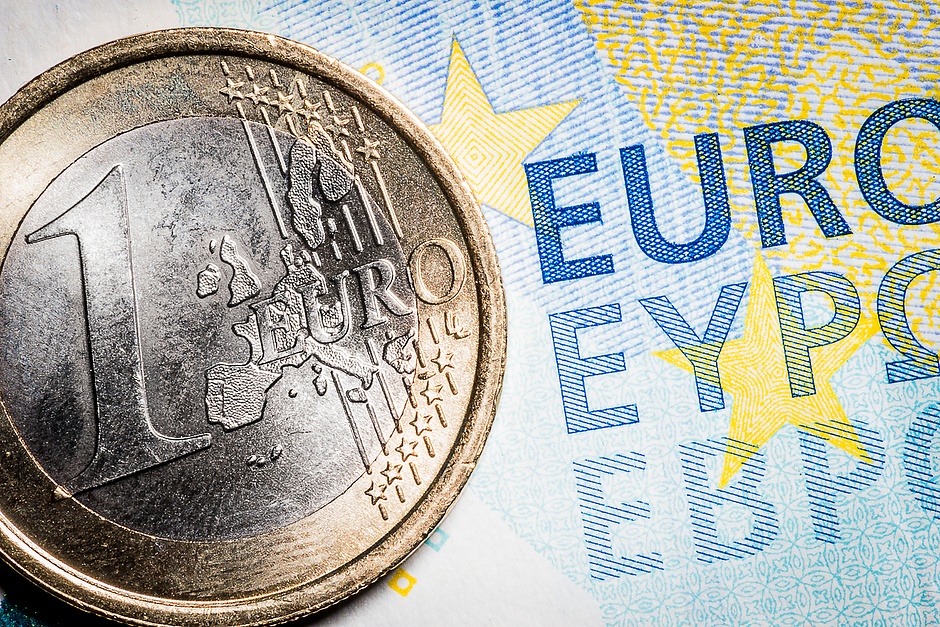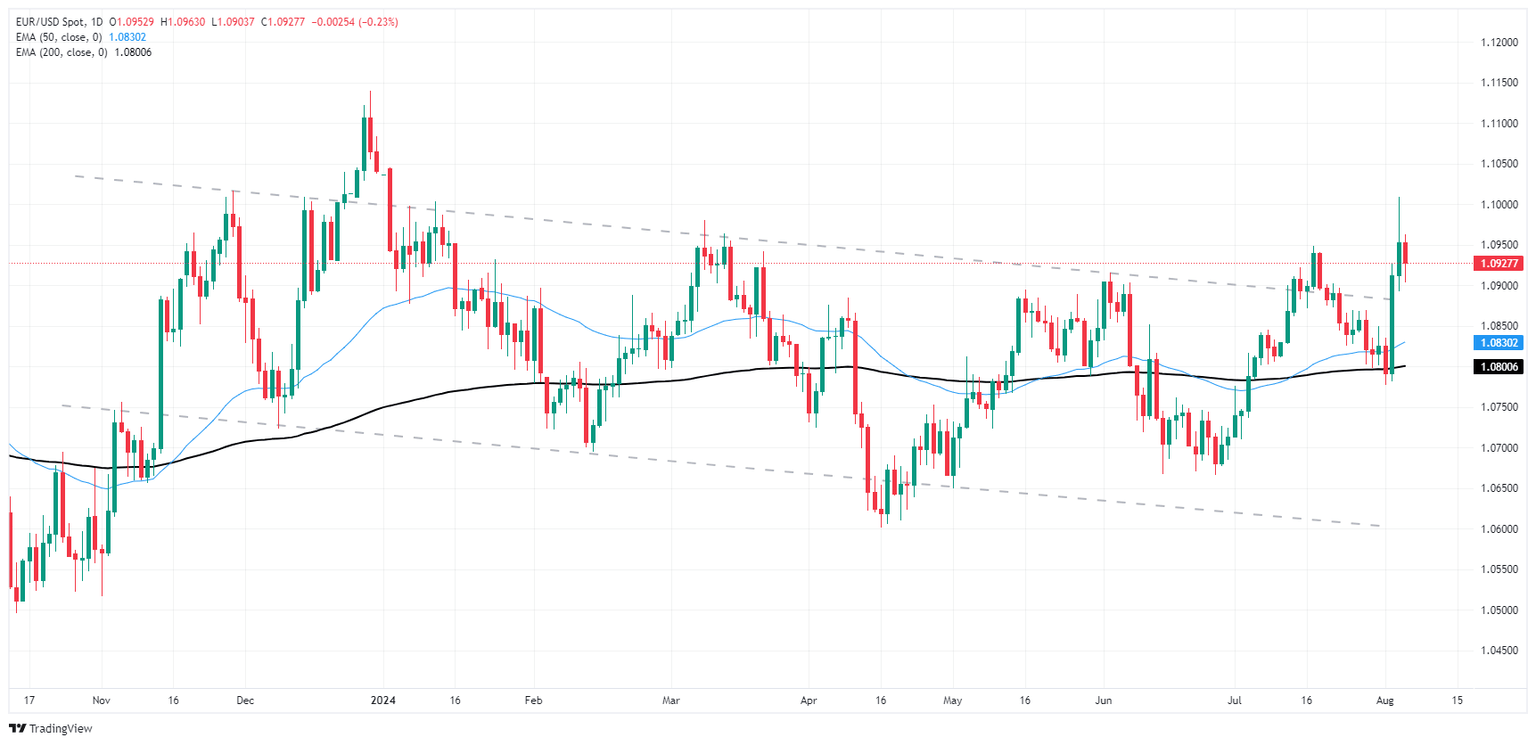EUR/USD pulls back, unable to hold 1.10
- EUR/USD eased on Tuesday despite recovering risk sentiment.
- Markets have leaned back into risk appetite on Fed rate cut hopes.
- Euro-area data soured early Tuesday, calendar looks thin for Wednesday.

EUR/USD trimmed recent gains and slipped back from the 1.1000 handle on Tuesday as markets continue to digest a recent rebalancing in FX market flows. Investors have recovered their footing and resumed betting on an uptick in the pace of rate cuts from the Federal Reserve (Fed) beginning in September. Pan-EU economic data did little to meaningfully move the needle on Tuesday, with a mid-tier release schedule on the cards for Wednesday.
Forex Today: Markets’ attention remains on data and rate cut bets
Pan-EU Retail Sales contracted -0.3% YoY in June, entirely missing the forecast 0.1% and falling from the previous period’s revised 0.5%. German Industrial Production figures are due on Wednesday, expected to recover to 1% growth MoM in June from the previous period’s -2.5% contraction.
Rate markets have fully priced in a September rate cut, and according to the CME’s FedWatch Tool, investors see two-to-one odds of a double cut for 50 basis points when the Federal Open Market Committee (FOMC) delivers its rate call on September 18. At the current cut, rate markets see zero chance of the Fed holding rates steady anymore in 2024, with a total of four quarter-point cuts expected by the end of the year.
EUR/USD technical outlook
Fiber traders have pulled back from 1.1000 after a failed bull run into the major price handle, and price action is poised to collapse back into a rough descending channel on daily candlesticks. EUR/USD has been mired in choppy consolidation around the 200-day Exponential Moving Average (EMA) for most of 2024, and the trend is set to continue as near-term momentum pivots once against into the bearish side. Short side targets will be set at the 1.0800 level, with sellers hoping to crack through and take a fresh run at the last major swing low below 1.0700.
EUR/USD daily chart

Euro FAQs
The Euro is the currency for the 20 European Union countries that belong to the Eurozone. It is the second most heavily traded currency in the world behind the US Dollar. In 2022, it accounted for 31% of all foreign exchange transactions, with an average daily turnover of over $2.2 trillion a day. EUR/USD is the most heavily traded currency pair in the world, accounting for an estimated 30% off all transactions, followed by EUR/JPY (4%), EUR/GBP (3%) and EUR/AUD (2%).
The European Central Bank (ECB) in Frankfurt, Germany, is the reserve bank for the Eurozone. The ECB sets interest rates and manages monetary policy. The ECB’s primary mandate is to maintain price stability, which means either controlling inflation or stimulating growth. Its primary tool is the raising or lowering of interest rates. Relatively high interest rates – or the expectation of higher rates – will usually benefit the Euro and vice versa. The ECB Governing Council makes monetary policy decisions at meetings held eight times a year. Decisions are made by heads of the Eurozone national banks and six permanent members, including the President of the ECB, Christine Lagarde.
Eurozone inflation data, measured by the Harmonized Index of Consumer Prices (HICP), is an important econometric for the Euro. If inflation rises more than expected, especially if above the ECB’s 2% target, it obliges the ECB to raise interest rates to bring it back under control. Relatively high interest rates compared to its counterparts will usually benefit the Euro, as it makes the region more attractive as a place for global investors to park their money.
Data releases gauge the health of the economy and can impact on the Euro. Indicators such as GDP, Manufacturing and Services PMIs, employment, and consumer sentiment surveys can all influence the direction of the single currency. A strong economy is good for the Euro. Not only does it attract more foreign investment but it may encourage the ECB to put up interest rates, which will directly strengthen the Euro. Otherwise, if economic data is weak, the Euro is likely to fall. Economic data for the four largest economies in the euro area (Germany, France, Italy and Spain) are especially significant, as they account for 75% of the Eurozone’s economy.
Another significant data release for the Euro is the Trade Balance. This indicator measures the difference between what a country earns from its exports and what it spends on imports over a given period. If a country produces highly sought after exports then its currency will gain in value purely from the extra demand created from foreign buyers seeking to purchase these goods. Therefore, a positive net Trade Balance strengthens a currency and vice versa for a negative balance.
Author

Joshua Gibson
FXStreet
Joshua joins the FXStreet team as an Economics and Finance double major from Vancouver Island University with twelve years' experience as an independent trader focusing on technical analysis.

















